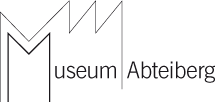Magdalena Abakanowicz, Anni Albers, Carl Andre, Leonor Antunes, Tonico Lemos Auad, Thomas Bayrle, Jagoda Buic, Heinrich Clasing, Yael Davids, Sofie Dawo, Ria van Eyk, Hans Finsler, Elsi Giauque, Sheela Gowda, Eva Hesse, Sheila Hicks, Loes van der Horst, Johannes Itten, Elisabeth Kadow, Paul Klee, Benita Koch-Otte, Heinrich Koch, Beryl Korot, Konrad Lueg, Agnes Martin, Katrin Mayer, Cildo Meireles, Kitty van der Mijll Dekker, Nasreen Mohamedi, Walter Peterhans, Edith Post-Eberhardt, Josephine Pryde, Florian Pumhösl, Grete Reichardt, Elaine Reichek, Willem de Rooij, Desirée Scholten, Johannes Schweiger, Gunta Stölzl, Lenore Tawney, Rosemarie Trockel, Vincent Vulsma, with archival materials and samples from Bauhaus Archiv Berlin, Stiftung Bauhaus Dessau, Burg Giebichenstein, Deutsches Textilmuseum Krefeld, and Stedelijk Museum Amsterdam, Fondation Toms Pauli, with a selection of books from the Seth Siegelaub @ Stichting Egress Foundation, and Coptic Cloth from the Museum Abteiberg collection
Curated by Rike Frank and Grant Watson
As one of the oldest techniques in human culture, textiles store knowledge and labour while communicating via colour, texture and form. The woven structure for example is based on an ancient system of warp and weft, intersecting threads that lead through serial repetition to the possibility of complex and beautiful cloth. Artists in the 20th Century have used textiles extensively as material, structure, referent and metaphor, although this connection has gone largely unnoticed by mainstream art history. And while there are many words for weaving, and the connection between textile and text is one explored by disciplines such as philosophy and sociology, the textile medium has barely impacted on art historical discourse where it remains little more than a footnote.
Based on the principle of woven structure and the thread as an organic line (as described by Paul Klee) TEXTILES: OPEN LETTER creates a dialogue between historical works and those of a younger generation. Through large-scale sculptures, wall hangings and fabric samples as well as works on paper, film and photography, the exhibition uncovers the potential of textile materials and structures, and looks at how artists have reworked this medium through iterations that are imaginative, conceptual and poetic as well as attentive to social concerns.
Especially since the Bauhaus, textile practice has been in dialogue with aesthetic and material experiments coming from the ‘fine art.’ During the 1970s, a number of women artists – including Lenore Tawney, Magdalena Abakanowicz and Sheila Hicks – pioneered the Fibre Art movement with the aim of establishing an independent status for textiles as part of a feminist praxis: often in close contact with Minimalist artists such as Agnes Martin, and in some cases on the basis of a training in the Bauhaus tradition. They designed monumental structures that moved beyond the technical limitations of the loom. A generation of artists emerging in the 1970s and 80s including Beryl Korot, Nasreen Mohamedi, and Lygia Pape, explored textiles though a fascination with serial notion and metaphors of the social, and today artists are often drawn to this medium because of its status as a ‘difficult’ material and its unstable position between functionality and aesthetics, art and craft, the individual and the collective.
The exhibition also shows the many and varied ways in which the history of Minimal and Conceptual art movements that shaped the Museum Abteiberg collection, have been influenced by textile materials and processes and by implication the extent to which textiles have been excluded from a discussion of the canon; often because of their utilitarian, gendered and déclassé connotations. In this sense, the title Open Letter (which refers to a 1958 work by Bauhaus artist Anni Albers) can be understood as an invitation to rethink the influence of textiles on art and vice versa, as well as the key role played by textiles in the development of an abstract visual language that can communicate across disciplinary boundaries.
In cooperation with Allianz Kulturstiftung and funded by Kunststiftung NRW and Mondriaan Fonds.
PROGRAM
22 Juni 2013
6 pm CONCERT in the exhibition, imas part of Ensemblia 2013: Morton Feldman, Crippled Symmetry (1982), musikFabrik Köln
8 pm OPENING with Dr. Gert Fischer, Cultural Deputy of the City of Mönchengladbach, Susanne Titz, Director Museum Abteiberg as well as guest curators Rike Frank and Grant Watson
9 pm PERFORMANCE A reading that writes a script and physical things by Yael Davids, performed by Einat Tuchman
10 pm PARTY Textiles: Open Letter & Ensemblia 2013
23 June 2013
12 pm ARTIST TALK with Beryl Korot
2 pm GUIDED TOUR with curators Rike Frank and Grant Watson
4 pm EXCURSION Besuch to the textile machine depot with Johannes Schweiger
3 October 2013
12 – 6 pm CONFERENCE ABSTRACTIONS, TEXTILES, ART
With Brigid Doherty (Professor for Art and Archaeology as well as Gramm studies at Princeton University), Hanne Loreck (Professor for Art and Culture Sciences/Gender Studies at Hochschule für Bildende Künste Hamburg) and Regina Prange (Professor for Modern and Contemporary Art History, Art and Media History at Goethe-Universität Frankfurt), as well as young art and culture scientists and curators.
12 pm GUIDED TOUR with curator Rike Frank
1.30 – 2.30 pm Sandwiches at the museum café
2.30 pm LECTURES and DISCUSSIONS
10 November 2013, 12– 6 pm
TEXTILES IN PROGRESS on the past, present and future of fabric
FINISSAGE with seven lectures and discussions
12 pm Last guided tour TEXTILES: OPEN LETTER
1.30–2.30 pm break at the museum café
12.30–5.30 pm Viewpoints and discussions in technology, design, art and textile history
Prof. Dr. Hans-Hennig von Grünberg, Susanne Titz, Prof. Dr.-Ing. Alexander Büsgen, Prof. Dipl.-Des. Marion Ellwanger-Mohr, Rolf Königs, Andreas Schulten, Dr. Karin Thönnissen, Dr. Annette Paetz, Dr. Karlheinz Wiegmann


